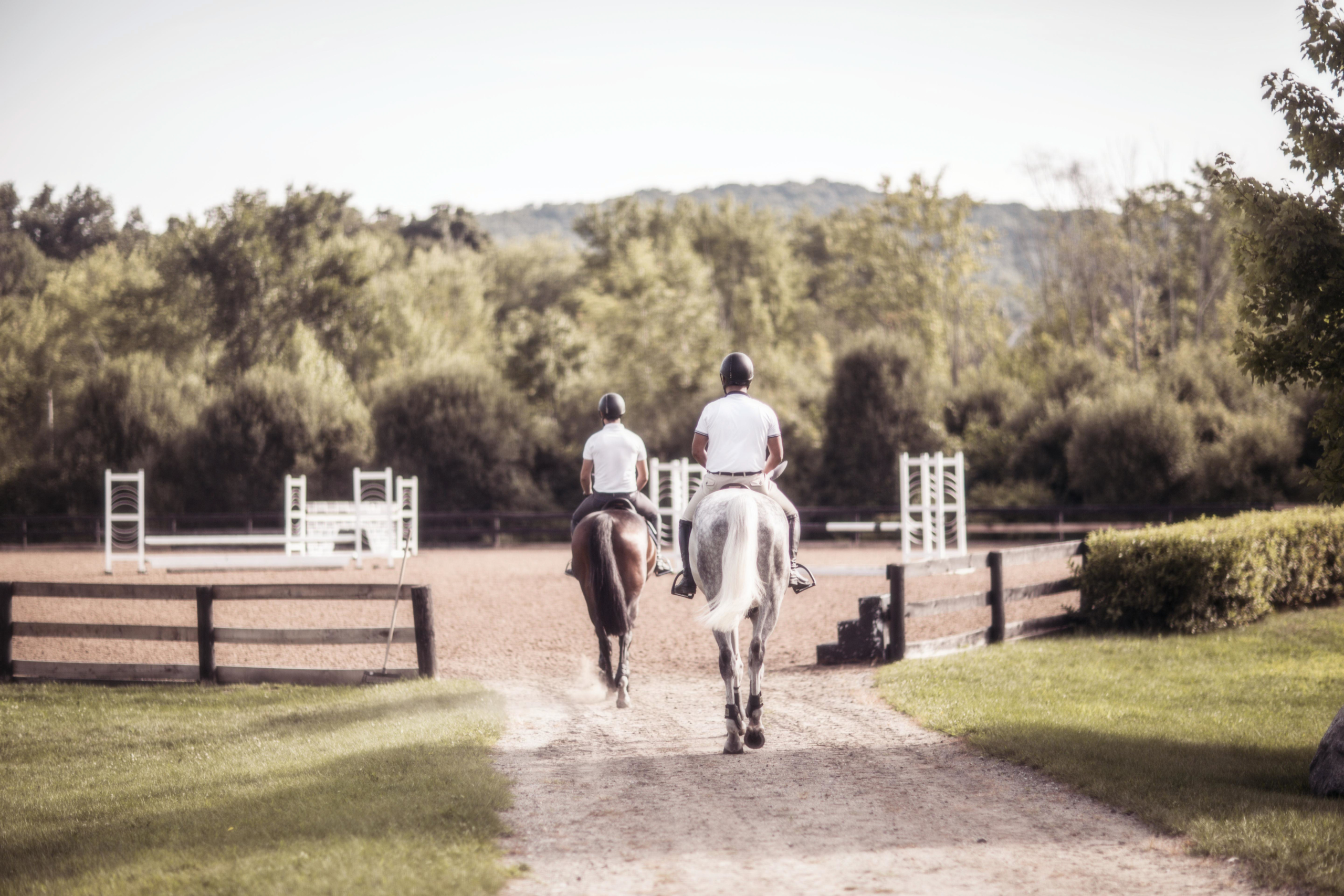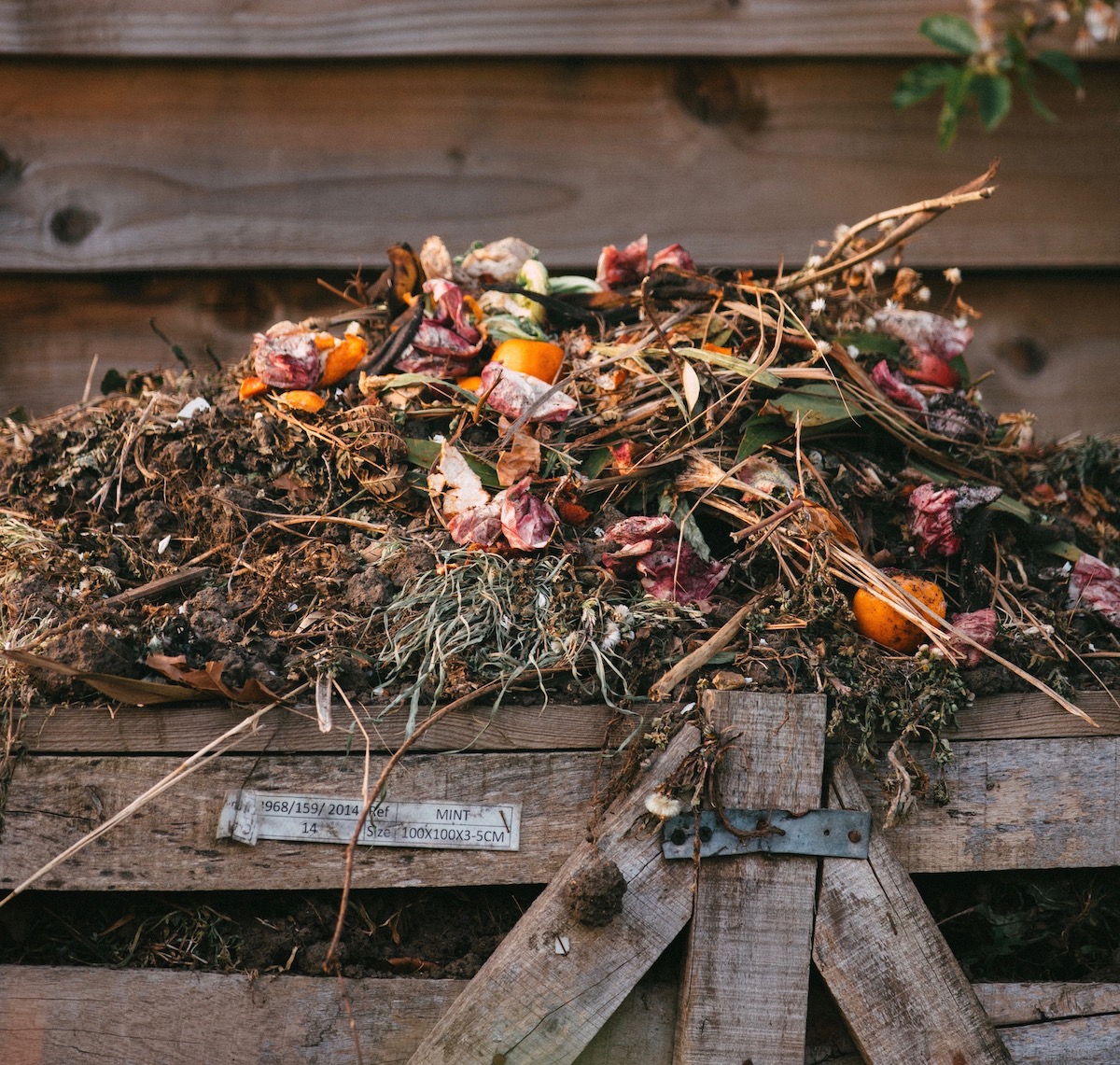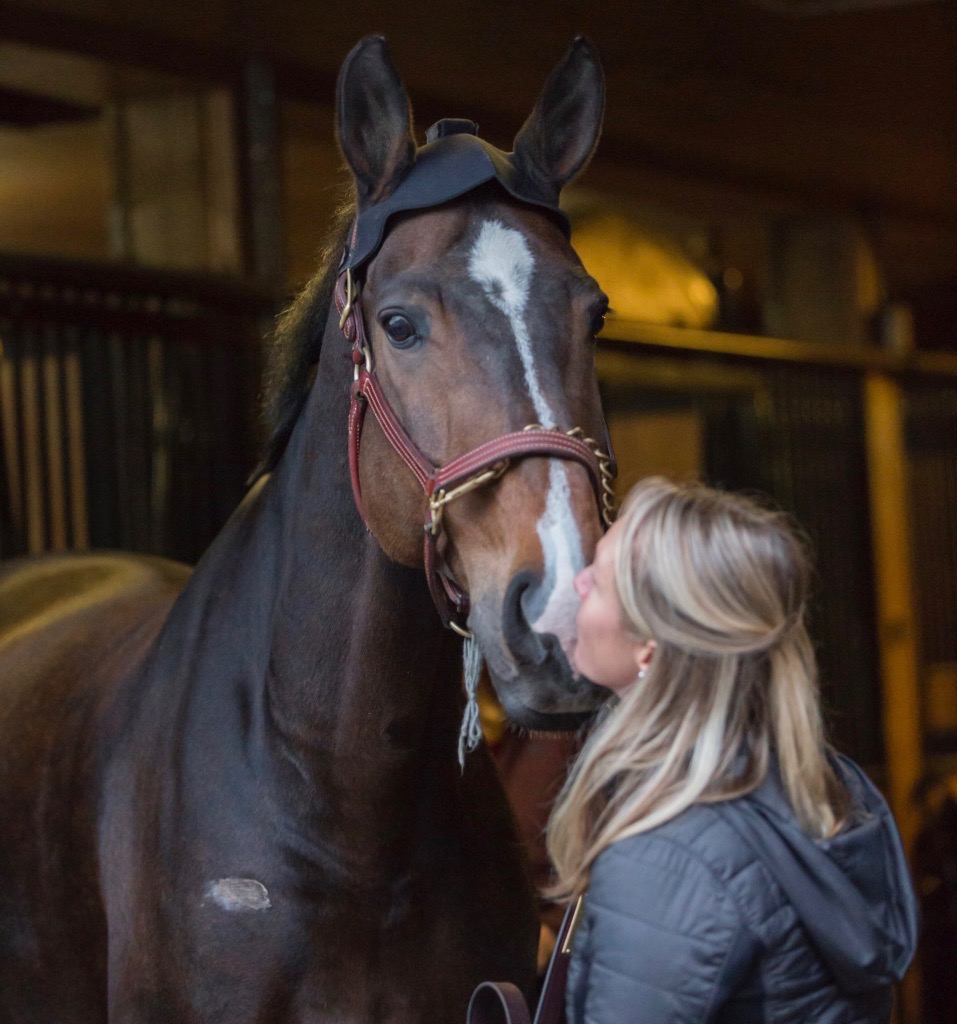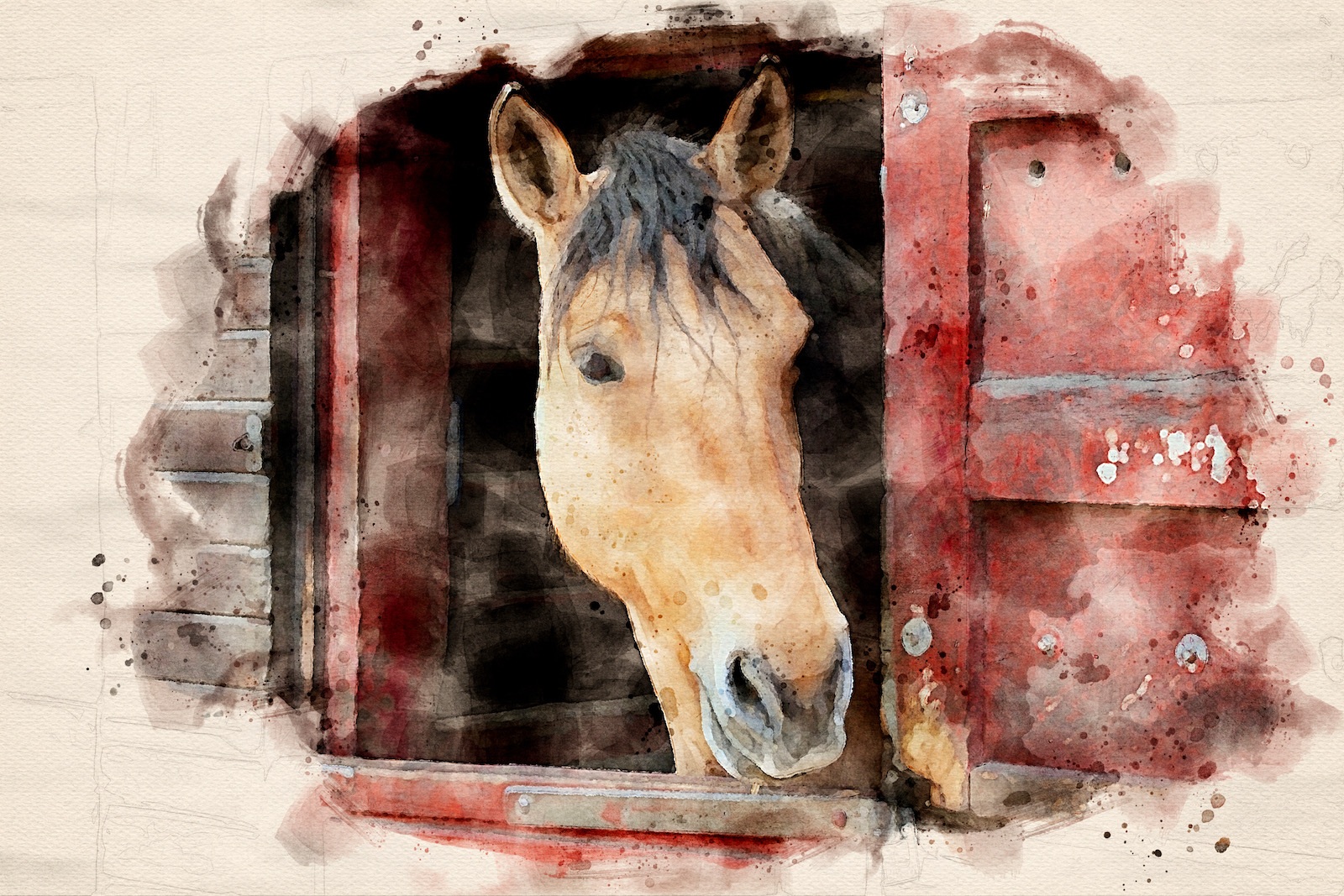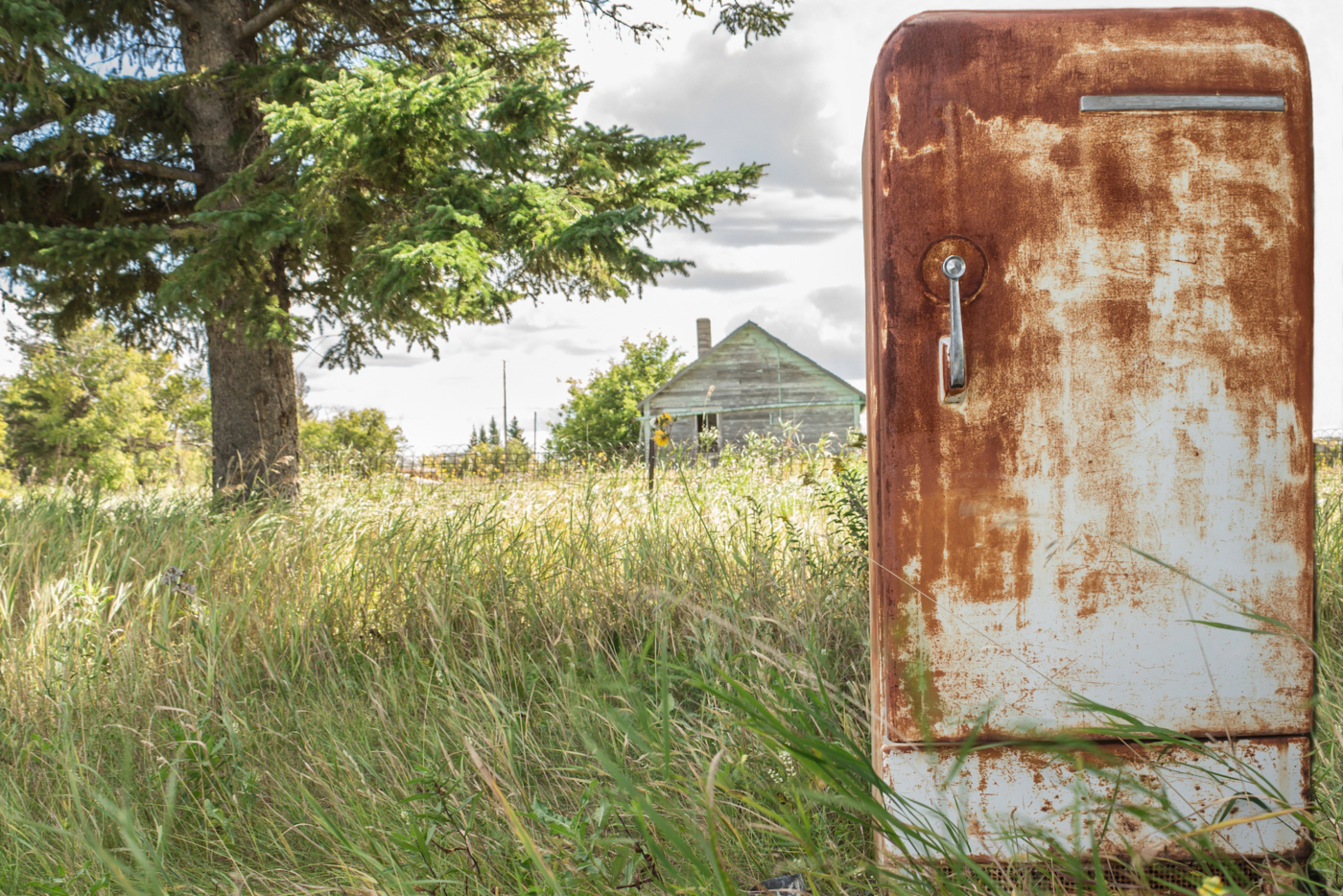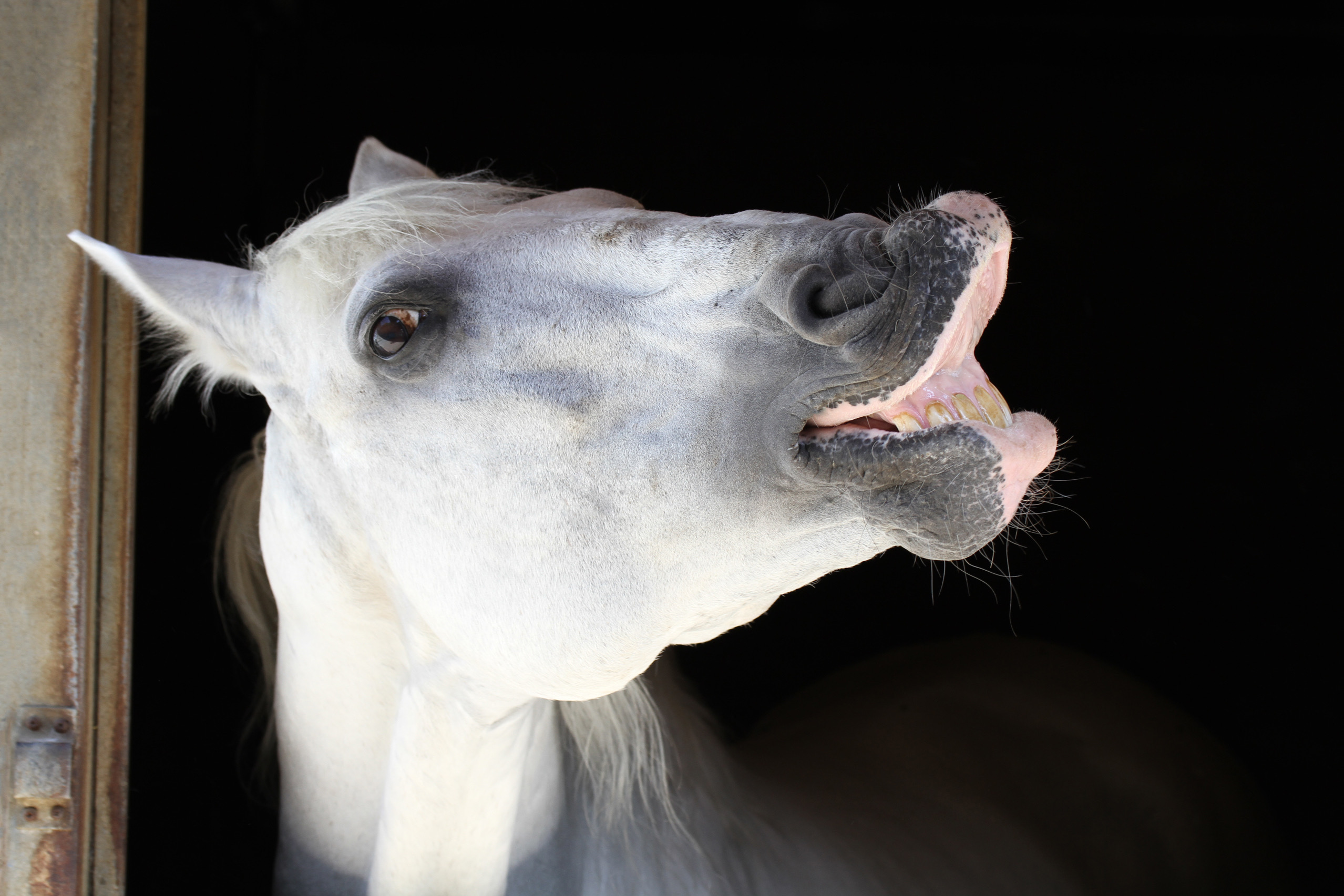Caring for a stable full of horses is like caring for a stable full of 1200-pound toddlers. They eat frequently, they are messy, they break stuff, and if left to their own devices for any length of time, they will engage in accidental self-harm. Because horses themselves require so much care and attention, essential farm maintenance can often be relegated to the back burner for far too long.
Spring (You know, that week between the culmination of the winter circuits and the commencement of the summer season?) is a great time to survey the farm to see what might require a bit of TLC. Fences may need mending, pastures may need seeding, and we’re willing to bet that the arena needs a good once-over.
You might recall that we interviewed Lawton Adams, co-founder of FootingFirst, about recent advances in arena surfaces last summer, and he debunked some common footing fiction with actual facts. This week we caught up with Lawton and his co-founding partner, Karen Leeming, to discuss the dos and don’ts of arena care. Because footing is a significant investment and should be treated as such, below we share all the dirt on how to keep your dirt in tip-top shape all year round.
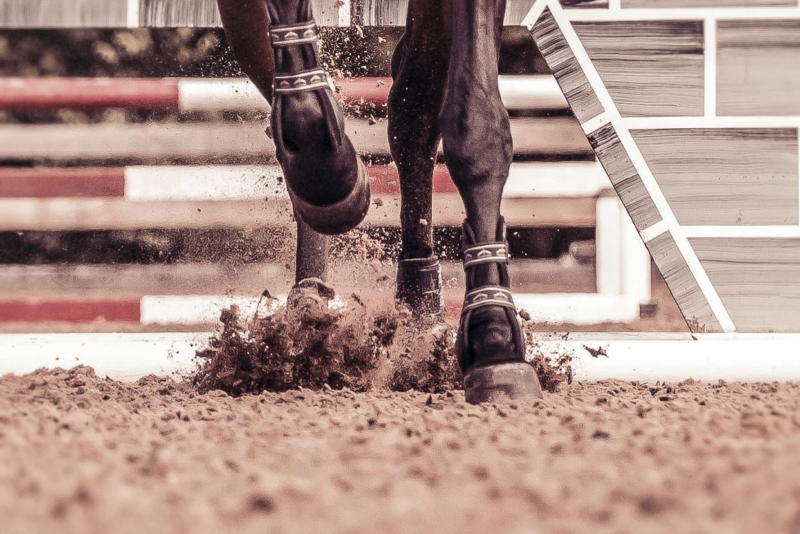
TravelRight™ dust-free footing at Triton Ventures
What is the main thing that people should know about arena maintenance?
KL: One issue we come across is that everybody thinks of arena maintenance too late. Everyone will come back from Florida and go, “Oh no, the outdoor!” and everybody going into October will go, “Oh no, the indoor!” So a good rule of thumb is to think of servicing your indoor when you’re in your outdoor, and to think of servicing your outdoor when you’re in your indoor.
LA: It’s certainly best to plan ahead. We can’t always get there immediately if an arena needs to be serviced, especially in the spring!
What basics should everyone know about grooming arena footing, regardless of the type?
LA: I believe these are the most important points:
Make sure you have the right harrow for your footing: If you don’t have the right harrow for your footing you’re going to have major issues. Plain sand footing (or western-style footing) uses one type of harrow, and footing that has fiber blended into it uses a different type of harrow.
When grooming an arena, allow for enough time: Sometimes an arena needs ten minutes, and sometimes it needs thirty minutes to get the footing in the right place. Don’t expect to do the same thing every day for months on end and have the footing be maintained properly. Sometimes it needs more work.
Grooming pattern: There are all sorts of strategies, but the most important part of grooming is that it’s not done the same way each time. Use a common-sense pattern, and change it up once in a while. Tight circles can be used to loosen the footing if necessary, but they should not be used every day.
No speeding: When grooming, don’t drive too fast. The inner tractor tire compresses in the corners and makes the footing uneven; you get the NASCAR effect, and the corners get too high. However, driving too slowly will lose the action on the spring tines. At the right speed they vibrate, and the vibration helps the footing flow right out from underneath the harrow, and you get a nice fluffy, even footing.
Don’t groom more than necessary: Particularly on footing with fiber. Some farms groom the arena frequently because they like it to have that tidy look. However, grooming does wear the footing a little bit. It also tends to pull the fiber to the top, whereas the horses blend the fiber in. The more the horses turn the footing up, the more the fiber gets turned in. Obviously, you need to groom when there is a lot of traffic, a lot of footfalls, or it’s getting lumpy, but don’t groom just because there are a few footfalls across the arena.
Pull the edges and corners in each week: If performed by hand using a rake, this will be done in ten to fifteen minutes. If it is ignored for a month, or three or four months, then a rake isn’t going to cut it. Then you need a shovel. But if you stay on top of it, it’s not so bad.
Don’t groom footing that is soaking wet or bone-dry: A tractor will sink in wet footing and cause issues, and that’s pretty obvious. However, a harrow will pull the fiber out of bone-dry footing, and that’s a bit less obvious. You don’t want to do that, so the proper amount of moisture is necessary in footing.
Jumps should be removed from an arena once a week: A lot of people don’t do it, but they should. Most barns are closed on Mondays, so the barns that do a good job take all the jumps out of the arena on Monday and the person doing the grooming spends a longer period of time grooming the arena and getting the edges and the corners where they belong. The rest of the week they’re grooming around the jumps.
KL: It’s ideal to move the jumps every week, but we all are in the industry and it doesn’t happen. And I know it doesn’t happen because I never did it when I managed my barn! However, the point is that the better you look after the footing and stay on top of it, the better it’s going to perform. If you can do it every week, that’s great, but it must be done every month or you will have problems. Like anything, the more you stay on top of it the better the results are going to be, and the easier it will be since the work doesn’t build up over time.
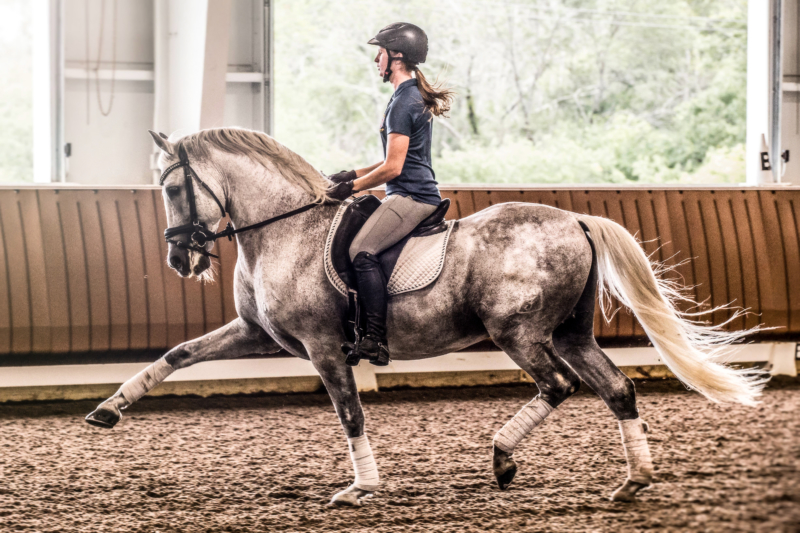
TravelRight™ dust-free footing at Avalon Farm
What else should we know about the basic care of footing?
LA: In an outdoor, keep up with the vegetation. Any weeds around the edges need to be removed. Also, keep organics off the footing. Leaves need to be blown off when possible, and manure needs to be removed. A little manure or a few leaves mixing into the footing won’t cause any major issues, but over a ten- to twenty-year period, small amounts of organics mixing in add up to a lot. Manure does not adversely affect high-quality footing any more than lower grade footing. A lot of manure mixing into footing is bad for any footing. We often get asked which footing doesn’t require manure removal, and the answer is that all footing requires manure removal!
KL: Another tip that we recommend is to put mats where you enter and leave the arena. As you’re driving in and out, and even with the horses, you have a clean area where some of the footing will track off the tractor and the harrow, and out of the hooves. If you keep that mat clean, you’re able to sweep that footing back into your arena. It also helps if you’re coming from the outside into the outdoor arena. It’s a nice place to stop to make sure you’re not bringing anything in that contaminates the footing, like mud or rocks.
Is there a general rule of thumb regarding irrigation for water-dependent footing?
LA: Water dependent footing needs the right amount of water. It sounds obvious, but you’d be surprised! It’s also important to water evenly and consistently. An irrigation system that soaks one area of an arena and misses another area will cause a lot of issues, and the longer it goes on, the more issues you will have.
KL: We recommend investing in a moisture meter. I wish I’d known about them when I was managing farms. It would have been a great tool to have! It helps to get a better understanding of how much moisture you like in your arena, because everyone has a different preference. Some people want more movement in the footing, and some want less. If you can get a read on how much moisture you prefer, then you can keep it consistent.
LA: There is a standard that we use for moisture in our proprietary footing or for horse shows, but we believe that each individual arena owner should find their own preference.

Superior Riding Surface (SRS) water-dependent footing at Castle Hill
Arenas need to be serviced occasionally. How do we know when it’s time to call the pros?
LA: Have your arena serviced at least once a year. On average, once a year works. There are facilities that are so busy that they need it more often, and we have customers that use their arenas so lightly and do such a good job on their own maintenance, that they can stretch it to every two years. However, one year is a good rule of thumb.
The typical service involves laser grading. If there’s a false base, we have to loosen it. We pull the edges and corners in and remove any vegetation. Then we till the footing as close as we can to the base. Then we proof roll it, laser grade it again, and then groom it. We inspect the footing and make any recommendations for changes in irrigation, grooming, or the necessity to add footing. We also inspect the customer’s harrow while we’re on site. For an average arena, service takes six to twelve hours if we’re not adding any additional footing.
It should be noted that footing can only be laser graded if the base was laser graded. If the base isn’t a consistent profile, then we can’t laser grade the footing.
KL: It’s very hard to retroactively laser grade the base on an outdoor arena that wasn’t laser graded originally. There’s fencing and drainage, and most of the time, if the base is incorrect we also find many other issues.
LA: Or, it’s an old arena that I built twenty-something years ago, in the pre-laser grade era. It’s a bit different with indoor arenas, and sometimes it’s well-worth removing the footing, grading the base, and replacing the footing. It’s much easier indoors.


